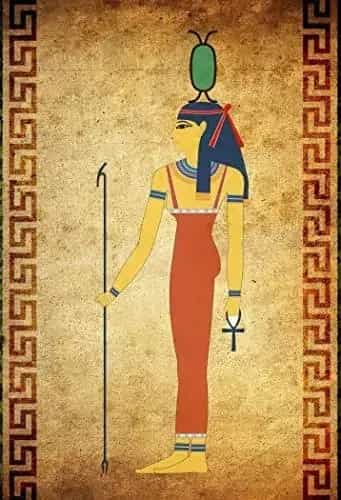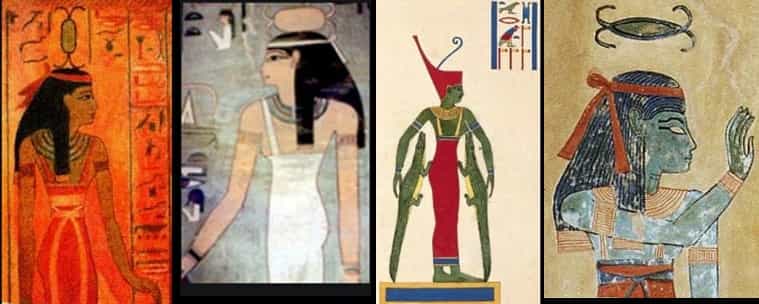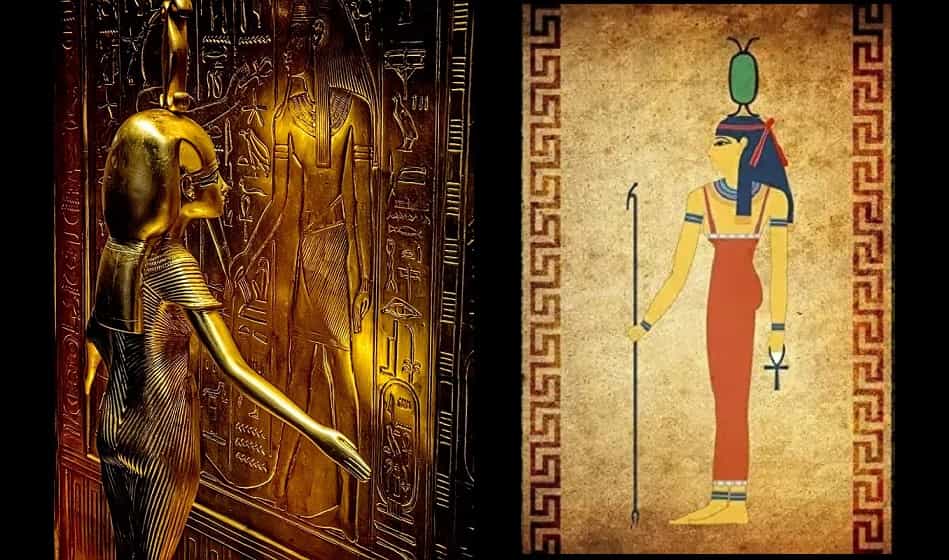Neith is one of the oldest known deities of ancient Egypt. As a result, her functions evolved over time. Like many goddesses, she exhibits a dual nature: gentle as a protector and fierce as a warrior.
There is abundant evidence that she held significant status during the predynastic and early dynastic periods, and reverence for her endured until the end of the pharaonic era.
Her character was complex, with her mythology expanding across this span. While many early myths about her have been lost, her image persists as that of a powerful deity whose roles encompassed both earthly life and the afterlife.
Neith was associated with creation, wisdom, war, and weaving. She was also worshipped as a funerary goddess who aided the souls of the dead, particularly warriors.
According to ancient Egyptian mythology, Neith was the creator of the world, making her the mother of all gods. She was revered as the giver of birth, leading to her being called the mother of Ra, and sometimes the consort of Sobek, the crocodile god associated with fertility, vegetation, and life.
In other myths from the Old Kingdom, she was depicted as the wife of Seth and the mother of Sobek. Known as the “crocodile nurse,” she served as protector to the pharaoh. She also guarded Osiris and Ra, using her arrows to ward off malevolent spirits, often referred to as “the watcher of dreams.” Due to her association with water, she was also linked to Khnum, the ram god.
During the New Kingdom, Neith took on the role of a creative Mother-Goddess linked to primordial waters. She was also revered as a protector of childbirth, being the first goddess to give birth herself. Priests of Neith acted as obstetricians, further solidifying her role as a protector during childbirth.
Neith was the tutelary deity of the city of Sais in the Nile Delta. She is often depicted wearing the crown of Lower Egypt.
As a warrior goddess, she was known as the “Lady of the Bow” and the “Ruler of Arrows.” Her primary emblem was a pair of crossed arrows against a leather shield, though she was sometimes associated with the scarab as well.
Given her warrior nature, Neith had the role of guiding fallen warriors to the afterlife. As the goddess of war and wisdom, she embodied the essence of strategic warfare. In Greek mythology, Athena adopted the archetype of Neith.
In her role as a funerary goddess, Neith protected the dead. She is credited with inventing the fabric used for bandages and wrappings for the deceased. She also played a role in restoring souls, offering bread and water to them after their long journey from the world of the living.
Alongside Isis, Nephthys, and Serket, Neith protected the mummy of Osiris, specifically safeguarding the stomach. She also appeared with Osiris, Anubis, and Thoth as a just judge of the dead in the afterlife.
Iconography
Neith is depicted as a woman with the Red Crown of Lower Egypt, carrying a bow and two arrows, or sometimes an owl and a spear or a weaver’s shuttle. She was also represented as a beetle, a bee, a cow, a fish, with the head of a lioness, and occasionally nursing a crocodile.









